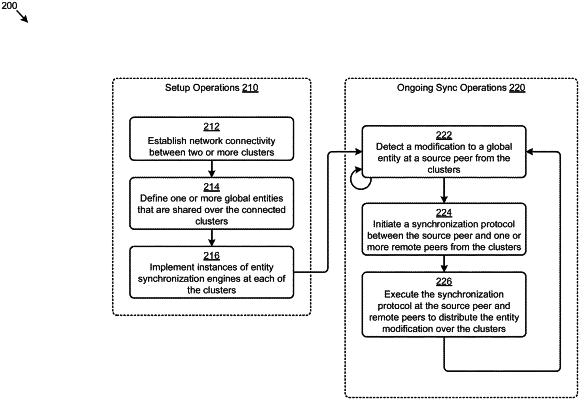| CPC G06F 11/2076 (2013.01) [G06F 9/45533 (2013.01); G06F 11/1464 (2013.01); H04L 67/1095 (2013.01); G06F 2009/45595 (2013.01)] | 24 Claims |

|
17. A computing system for managing a policy applied at two different clusters of a distributed computing system, comprising:
a first node having a first memory storing a first set of instructions and a first processor for performing a first set of acts, the first set of acts comprising:
receiving, at a first node in a first cluster of a distributed computing system, an input from a first user representing a modification of a policy, wherein the distributed computing system comprises the first cluster and a second cluster, the first cluster comprising a first plurality of nodes including at least the first node, the second cluster comprising a second plurality of nodes including at least a second node, and the first and second clusters apply the policy to at least a second user;
updating, by the first node, a first version of the policy at the first cluster based on the received input from the first user;
identifying, by the first node, a peer at the second cluster corresponding to the policy; and
transmitting, by the first node, a peer-to-peer synchronization message to the second node in the second cluster using a peer-to-peer synchronization protocol, wherein the peer-to-peer synchronization message represents the modification of the policy; and
the second node having a second memory storing a second set of instructions and a second processor for performing a second set of acts, the second set of acts comprising:
receiving, by the second node, the peer-to-peer synchronization message representing the modification of the policy from the first node; and
updating, by the second node, a second version of the policy at the second cluster based on the peer-to-peer synchronization message from the first node.
|